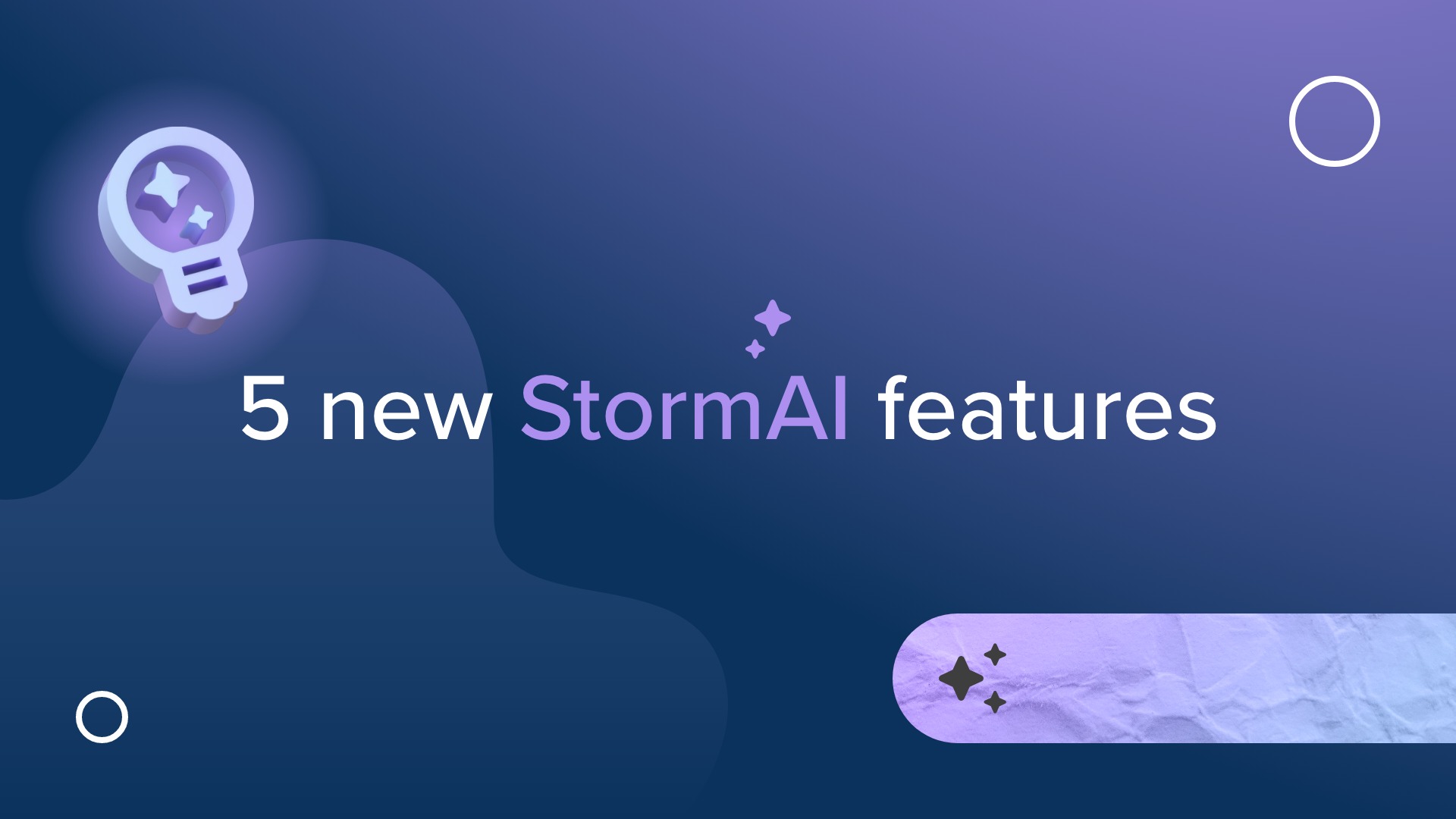Ditch Post-It Notes for Agile Planning Tools
Why Project Managers across the world are changing their tactics.
“If it ain’t broke, don’t fix it.” That old adage carries a lot of weight when you’re talking about a repairing hot water heater or re-inventing a common tool. Why put effort into changing something that’s still working well?
Since the sticky note became a mainstay in our daily lives back in the 80s, it hasn’t needed to be fixed, because – well, it still works. Sure, sticky notes have gotten several makeovers through the years, but the basic concept is mostly unchanged. Everyone knows what a sticky note is and what it does.
But just because the tool itself is still functional, that doesn’t mean something isn’t still broken.
In the case of project management, it’s not the water heater that’s broken, it’s the old, corroded copper pipes, leaky faucets, and the rest of the system that needs to be updated.
Project managers have relied on sticky notes for decades, and for the most part, that system has worked just fine. But just like water system in our old asbestos-era home, even though the water heater might still work — it’s time for an upgrade.
Thanks in no small part to the dramatic workplace shifts we’ve seen over the past few years, more and more project managers are dropping post-it notes, paper products, and whiteboards in favor of digital agile planning tools to help their teams productively and effectively plan, act, and implement.
It’s not just the most tech-savvy PMs of the world making the shift to digital tools, either. Recent statistics indicate that 77% of projects noted as “high-performing” use project management software.
The Issues With Outdated Post-It Note Planning
Sticky notes are great for setting a personal reminder to pick up bread on the way home, make a dentist appointment, or call Phil from accounting back, but in today’s fast-paced corporate environment, they simply don’t cut it for efficient planning.
Project management is one of those vague English-language terms that has more meanings and applications than any two-word phrase rightfully should. It can apply to a construction outfit expanding an existing bridge, an energy company relocating infrastructure on a remote site, or a software company developing a new feature.
The one thing that virtually every project management application has in common is that they all require thorough, detailed planning.
Take any one of the examples above and it’s not hard to see why sticky notes aren’t going to cut it when a project gets past the planning stage and into development and construction. Personally, I’d prefer to avoid bridges where the load capacity was calculated in sharpie on a pink sticky note that fell off a whiteboard and ended up under a desk a thousand miles from the construction site.
Jokes aside, while it’s extremely unlikely that critical data such as bridge loads would be handled so irresponsibly, the costs of over-reliance on sticky notes for project planning can be real, and can have a tangible negative impact on both the project and your organization.
The issues of project planning on a physical wallboard, whiteboard, or corkboard are not exactly surprising to anyone who has suffered through a project using these methods. From the small but annoying wrinkles — such as illegible handwriting — to the larger, more impactful problems like a lack of document control or unclear roles and responsibilities, the sticky note planning method is riddled with inefficiencies.
To dive back into my book of proverbs, when it rains, it pours, turns out to be surprisingly accurate when it comes to roadblocks in project management.
Simple issues in a single planning session, like a lack of cohesion and clarity, or the need to transcribe countless stickies into a more formal document, can cause ripple effects that start to add up, affecting the budget, timeline, and efficiency of any project.
The best, most experienced, project managers may be able to overlook these small, but familiar irritations that go hand-in-hand with sticky note planning sessions. But when you take a step back and start considering factors like the depth of information (or lack thereof) that you can add to a 3x3 sticky note, or the problems associated with increasingly remote and hybrid teams, you can really see how sticky note planning is not just an outdated method of project management, it’s a wholly inefficient and costly ritual that is destined to go the way of copper waterlines.
The good news? Avoiding the headache and shifting to a digital agile planning tool is as easy as typing in your email address and clicking sign up.
The Benefits Agile Planning Tools Give Project Managers
An agile planning tool or software opens a new realm of possibilities for PMs and their teams
The obvious benefits start with simply having a more reliable, scalable planning mechanism – which in itself is a worthwhile investment – but they also extend throughout the entire organization in the form of time and money savings, better efficiency, and a more modern, integrated workspace.
As the global workforce shifts to remote and hybrid workplace models, digital collaboration has taken the corporate world by storm. By eliminating physical planning spaces and whiteboards, project managers can fully integrate their entire team into whatever project is on the go, adding valuable insight, open communication, and dramatically reducing the barriers to a project’s success.
Embracing digital tools is no longer a choice reserved for the tech-savvy, but has become a necessity for all high-performing teams. Recent studies have shown that 44% of projects fail due to a lack of alignment between business and project objectives. It’s a shocking statistic, but when project reports are presented in the form of a blurry smartphone photo of a whiteboard with dozens of sticky notes, it’s not surprising that getting alignment is a challenge.
By going digital, not only is the door open to better collaboration, but these dynamic tools provide an efficient, reliable, and legible record of work done from the first brainstorming session all the way through to project completion – and one that didn’t require hours of transcription or data re-entry and re-location.
So regardless of whether you’re looking for a simple group task management system to get the sticky notes off your computer monitor, or a full suite of tools to better engage your team and improve results, you won’t find the answer in the stationary section – it’s time to go digital.
An Agile Planning Tool You Can Trust
Sections of this article might come across as strangely specific examples, or eerily familiar situations. That’s because they are. At Stormboard, we’ve been there, we understand the chaos of the whiteboard at the front of the boardroom, and we’ve all received the meeting follow-up email with a blurry (but colorful) photo tagged “great collaboration on this today!”
We created Stormboard to put an end to the over-reliance on paper sticky notes, and we’ve listened to our 1 million+ users around the world walk us through their own struggles to create an Agile Planning Tool you can really trust.
Whether your team works in shared documents, leverages Agile tools like Jira, Azure DevOps, or Rally, or is just looking for a professional report to deliver planning results to stakeholders, we’ve got you covered.
When it comes to the old ways of Project Management and planning, it is broke – and it’s time to fix it.












